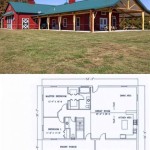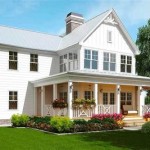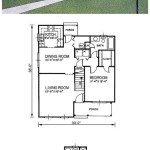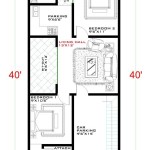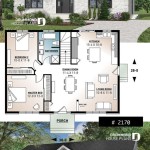Easy Bird House Plans: Free Resources for Backyard Birding
Providing a safe and welcoming shelter for birds can significantly enhance a backyard environment, promoting biodiversity and offering opportunities for observation and enjoyment. Constructing a birdhouse is a rewarding project that can be undertaken by individuals with varying levels of woodworking experience. Fortunately, numerous free birdhouse plans are readily available, catering to different bird species and aesthetic preferences. These plans typically include detailed instructions, material lists, and diagrams, making the construction process accessible and straightforward.
Before embarking on a birdhouse project, it is crucial to understand the specific needs of the intended avian inhabitants. Different bird species prefer different sized entrances, cavity dimensions, and mounting heights. Selecting an appropriate plan that aligns with the local bird population will increase the likelihood of successful habitation. Furthermore, considering factors such as drainage, ventilation, and protection from predators is essential for creating a safe and healthy environment for nesting birds.
Choosing the Right Birdhouse Plan
The first step in building a birdhouse is selecting a suitable plan. The abundance of free plans available online and in print can be overwhelming, so it is important to refine the search based on several key criteria. The most important factor is the type of bird the builder hopes to attract. Different species have specific requirements for cavity size, entrance hole diameter, and floor dimensions. For example, a birdhouse designed for wrens will be significantly smaller than one intended for bluebirds or purple martins.
Websites dedicated to bird conservation, such as those maintained by Audubon societies and ornithological organizations, often provide species-specific birdhouse plans. These plans are typically based on research and best practices to ensure the birdhouse is safe and effective. Plans readily available from trusted sources are preferable to those encountered on less reputable sites.
The skill level of the builder should also be considered when selecting a birdhouse plan. Some plans are designed for beginners with basic woodworking skills, while others are more complex and require advanced techniques. Simple box-style birdhouses are ideal for novice builders, while more elaborate designs with angled roofs, decorative trim, or multiple compartments may be better suited for experienced woodworkers.
Finally, the materials available and the desired aesthetic of the birdhouse should be considered. Most birdhouse plans call for readily available lumber, such as pine or cedar. Cedar is a particularly good choice because it is naturally weather-resistant and does not require painting or staining. However, pine is a more affordable option and can be painted to protect it from the elements. The plan should include a detailed material list to ensure the builder has everything needed before starting the project. From a design perspective, the chosen plan should complement the surrounding landscape and reflect the builder's personal taste.
Essential Considerations for Birdhouse Construction
Beyond selecting a birdhouse plan, several key considerations are important for ensuring the safety, durability, and habitability of the structure. These considerations range from construction materials and techniques to the placement and maintenance of the finished birdhouse.
The type of wood used in construction has a significant impact on the longevity of the birdhouse. As previously mentioned, cedar is an excellent choice due to its natural resistance to rot and insects. It also holds up well in a variety of weather conditions. Other suitable options include redwood, cypress, and untreated pine. Avoid using plywood or treated lumber, as these materials can contain chemicals that are harmful to birds. If using pine, consider applying a non-toxic sealant or paint to protect it from the elements. Choose light colors that reflect heat and avoid dark colors that can cause the birdhouse to overheat in direct sunlight.
Proper drainage and ventilation are crucial for maintaining a healthy environment inside the birdhouse. Drainage holes should be drilled in the floor of the birdhouse to allow rainwater to escape. Ventilation holes near the top of the birdhouse will help to circulate air and prevent the buildup of moisture and heat. The size and number of these holes will vary depending on the size of the birdhouse, but it is generally recommended to have at least two or three small holes on each side.
The entrance hole should be sized appropriately for the target bird species. A hole that is too large will allow predators to enter the birdhouse, while a hole that is too small will prevent the birds from entering. Many free birdhouse plans specify the recommended entrance hole diameter for different species. Consider adding a predator guard around the entrance hole to deter squirrels, raccoons, and other animals from enlarging the hole or reaching inside to prey on the eggs or young birds.
The internal surfaces of the birdhouse should be left rough to allow young birds to easily climb out of the nest. Avoid using smooth or slippery materials, such as plastic or painted wood, on the interior surfaces. Consider adding a few horizontal scratches or grooves to the inside walls to provide extra grip.
The assembly process should prioritize durability and weather resistance. Use galvanized nails or screws to prevent rusting and ensure a secure connection between the different components of the birdhouse. Apply a waterproof sealant to any joints or seams to prevent water from seeping inside. The roof should be securely attached and slightly overhang the sides of the birdhouse to protect it from rain.
Proper Placement and Maintenance of Birdhouses
Once the birdhouse is constructed, proper placement and regular maintenance are essential for attracting birds and ensuring their continued safety and well-being. The location of the birdhouse should be carefully considered based on the specific needs of the target bird species.
Different bird species prefer different types of habitats. Some birds prefer open areas with plenty of sunlight, while others prefer shaded areas with dense vegetation. Research the preferred habitat of the target bird species and choose a location that closely resembles it. For example, bluebirds prefer open areas with short grass and scattered trees, while wrens prefer dense shrubs and vines.
The height of the birdhouse should also be considered. Some birds prefer to nest close to the ground, while others prefer to nest higher up in trees. The recommended height for different species is often included in the birdhouse plan. A birdhouse placed too low may be vulnerable to ground predators, while a birdhouse placed too high may be difficult for the birds to access.
The orientation of the entrance hole can also affect the likelihood of birds nesting in the birdhouse. In general, it is best to orient the entrance hole away from prevailing winds and direct sunlight. This will help to protect the birds from harsh weather conditions and prevent the birdhouse from overheating.
Mounting the birdhouse securely is crucial for preventing it from falling down or being damaged by wind or other elements. A sturdy pole or tree branch is typically used to support the birdhouse. The birdhouse should be attached to the support using screws or nails, and the connection should be checked regularly to ensure it remains secure. Avoid using wire or rope to hang the birdhouse, as these materials can break or fray over time.
Regular maintenance is essential for keeping the birdhouse clean and safe. Birdhouses should be cleaned out at least once a year, ideally after nesting season is over. Remove all old nesting material to prevent the buildup of parasites and diseases. Check the birdhouse for any damage or wear and tear and make repairs as needed. Replace any missing or damaged components, such as the roof, entrance hole, or predator guard.
Avoid using pesticides or other chemicals inside or around the birdhouse. These chemicals can be harmful to birds and their young. If necessary, use natural pest control methods to keep insects and other pests away from the birdhouse. Regularly monitor the birdhouse for signs of predators, such as squirrels, raccoons, or snakes. Take steps to deter these predators from accessing the birdhouse, such as installing a predator guard or relocating the birdhouse to a safer location.
By carefully considering these factors, individuals can create a welcoming and safe environment for birds in their backyard. Free birdhouse plans provide a cost-effective and accessible way to contribute to bird conservation and enjoy the beauty and wonder of nature.

Free Birdhouse Plans 100 Things 2 Do

Free Diy Birdhouse Plans For Your Backyard

Free Birdhouse Plans Diy Homemade Nesting Box Projects Patterns Monograms Designs Templates

Diy Birdhouse Plans Easy Beginner Tutorial 2024

Birdhouse And Nest Box Plans For Several Bird Species The Birders Report

Bird House Plans Free Construct101

Basic Bird House Plan
:max_bytes(150000):strip_icc()/birdhouse-bd244c546f454563a8c887babfba0806.jpg?strip=all)
32 Free Diy Birdhouse Plans You Can Build Today

Free Bird House Plans Bluebird Purple Martin Wren More

Simple Bird House Plans Free Construct101
Related Posts

